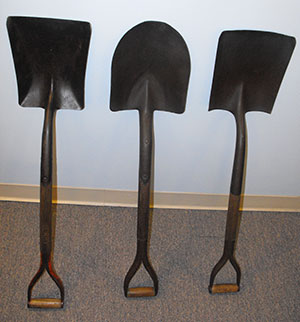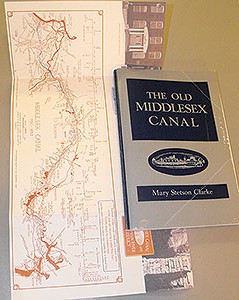 Eagle Feathers #22 – The first Big Dig
Eagle Feathers #22 – The first Big Dig
By Bob (Monty) Doherty
This year we saw a lot of snow fall in and around Boston. And as we all learned (as if we didn’t already know), shoveling is hard work, even of it’s just the light, fluffy stuff.
How would you like to shovel a ditch over 3½ feet deep, 33 feet wide and 24¼ miles long? My guess is, no matter how long it is, given the choice between the two, you’d pick your snow-filled driveway.

The historic truth is that the former option was actually achieved. It took ten years, but with shovels in hand, the Middlesex farmers dug the Middlesex Canal, which ran from Lowell to Charlestown. The Canal went through Somerville and eight other towns, finally ending in Boston.
In essence, the massive undertaking was Massachusetts’s first “big dig.” It was an engineering project of immense complexity for its time. It encompassed not only the digging of the canal itself, but also the construction of nearly 50 bridges, 20 locks and 8 aqueducts. The source of the water for the Middlesex Canal was the Concord River. For 50 years (1803 to 1853), the historic Concord River water, in the form of the Middlesex Canal, ran through the entire length of Somerville.
At the time, the canal was needed to help the City of Lowell and to export and import goods efficiently from Boston. Before the birth of the canal, the only way to move materials was via narrow and rut-ridden pathways traversed by wagon. With the canal, boats filled to the brim were towed by horses along walkways on each side of the canal.
It is difficult to articulate the ground breaking (pardon the pun) impact of the canal because we now live in a time filled with railroads, planes, highways and paved roads. For over 25 years, the canal was the main means of transportation between Lowell and Boston, until the train came into existence in approximately 1835. Ironically enough, the canal towed the very supplies that would be used to build the railroad that would eventually put the canal out of business.
Though the main purpose of the canal was commerce, its history is not without stories of notable personalities of the time who traveled it for pleasure. People would visit the canal both in the summer and winter, because once the canal froze, it became a marathon-length ice skating lane. The great Henry David Thoreau, author of the book Walden (1854), as well as A Week on the Concord and Merrimack Rivers (1849), is one such person and the famed statesman of his time, Daniel Webster (namesake of Somerville’s Webster Avenue) is another.
 The canal was a pioneering enterprise that more than served its purpose for the time. Memorial markers sprinkle the length of what was once the thriving waterway that is mostly filled in today. In Somerville alone, four memorial markers mark the path of the canal. One can be found on the Medford/Somerville line on Boston Avenue at Alewife Brook Parkway. One is in front of St. Polycarp’s Church. There is yet another at Foss Park, and the final marker lies by the East Somerville Library. Additionally, Somerville’s Canal Lane and Middlesex Avenue are named after the canal, as is Boston’s Canal Street.
The canal was a pioneering enterprise that more than served its purpose for the time. Memorial markers sprinkle the length of what was once the thriving waterway that is mostly filled in today. In Somerville alone, four memorial markers mark the path of the canal. One can be found on the Medford/Somerville line on Boston Avenue at Alewife Brook Parkway. One is in front of St. Polycarp’s Church. There is yet another at Foss Park, and the final marker lies by the East Somerville Library. Additionally, Somerville’s Canal Lane and Middlesex Avenue are named after the canal, as is Boston’s Canal Street.
So the next time you find yourself sitting in traffic and looking over in awe at the Big Dig, know that the first “big dig” was no less remarkable and just happened to run through your home town.

 Holiday Greetings
Holiday Greetings Porer Square Books
Porer Square Books













Reader Comments